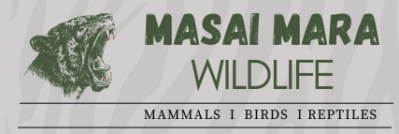- Common Names: Kirk’s Dik-dik, Suguya (Swahili), Eronko (Maasai)
- Scientific Name: Madoqua kirkii
- Size:
- Head-Body Length: 80 cm (31 inches)
- Shoulder Height: 40 cm (16 inches)
- Gestation: 26 weeks
- IUCN Status: Least Concern, though local populations are sometimes threatened by habitat loss and hunting.
Recognition and Appearance
The Kirk’s Dik-dik is a delicate, dwarf antelope known for its grey-brown coat and large, mobile nose. This elongated snout aids with cooling and moisture regulation in hot climates. Both males and females have a crest of erectile hair between the ears, but males are distinguished by their short, spiky horns. The eyes feature pre-orbital scent glands, which are used for marking territory as the dik-dik passes through its home range.
Kirk’s Dik-dik are notable for their slender, fine-boned legs, giving them a graceful appearance as they move cautiously through the underbrush.
Habits and Behavior
Kirk’s Dik-dik are shy and retiring creatures, known for their freeze behavior when they perceive danger. They remain motionless, often raising a front foot, before quickly darting away into dense cover. If startled, they can zigzag through vegetation at surprising speeds.
These monogamous antelope pair for life, with males and females forming tight, bonded units. This means that when you spot one dik-dik, it’s likely that its partner is close by. They are active both day and night, alternating between feeding and rest periods.
Kirk’s Dik-dik are territorial and use communal dung heaps to mark their territory. They leave scratch marks on the ground near these heaps and use scent from their pre-orbital glands to further delineate their space.
Diet
As choosy browsers, Kirk’s Dik-dik feeds on a variety of leaves, shoots, and occasionally fruits, but they show a preference for specific plants. They are particularly fond of Croton thickets, which offer both food and protection.
Where to Find
You’ll often find Kirk’s Dik-dik in wooded savannas, riverine woodlands, and areas with thick cover. They are commonly spotted in the Masai Mara, where their territories overlap with a variety of other wildlife.
Reproduction and Offspring
Kirk’s Dik-dik give birth after a 26-week gestation period, with most births occurring during the wet season when food is more plentiful. A single fawn is born and is hidden in dense cover for its first few weeks of life, relying on the mother’s protection.
Conservation Status
While the IUCN lists Kirk’s Dik-dik as Least Concern, they face local threats due to habitat degradation, hunting, and competition with livestock. Nevertheless, their broad range and adaptability to various habitats, including dry regions, help maintain stable population numbers.
Interesting Facts
- The large nose of Kirk’s Dik-dik helps them regulate body temperature, making them well-suited to hot environments.
- They are known for their ‘dainty’ zigzag running, a common tactic to avoid predators like leopards and birds of prey.
- Males are territorial and actively defend their range, while females tend to stay close to the boundaries of their partner’s territory.
Kirk’s Dik-dik might be small, but they are fascinating creatures with a unique social structure and adaptive behaviors that make them one of the most interesting antelope species to spot on a safari in the Masai Mara!
